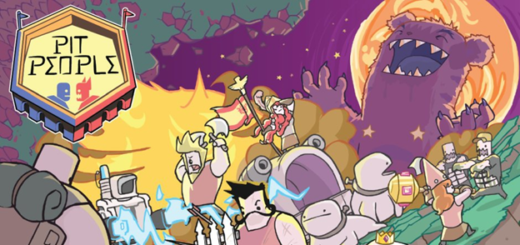CALL OF DUTY: INFINITE WARFARE Review
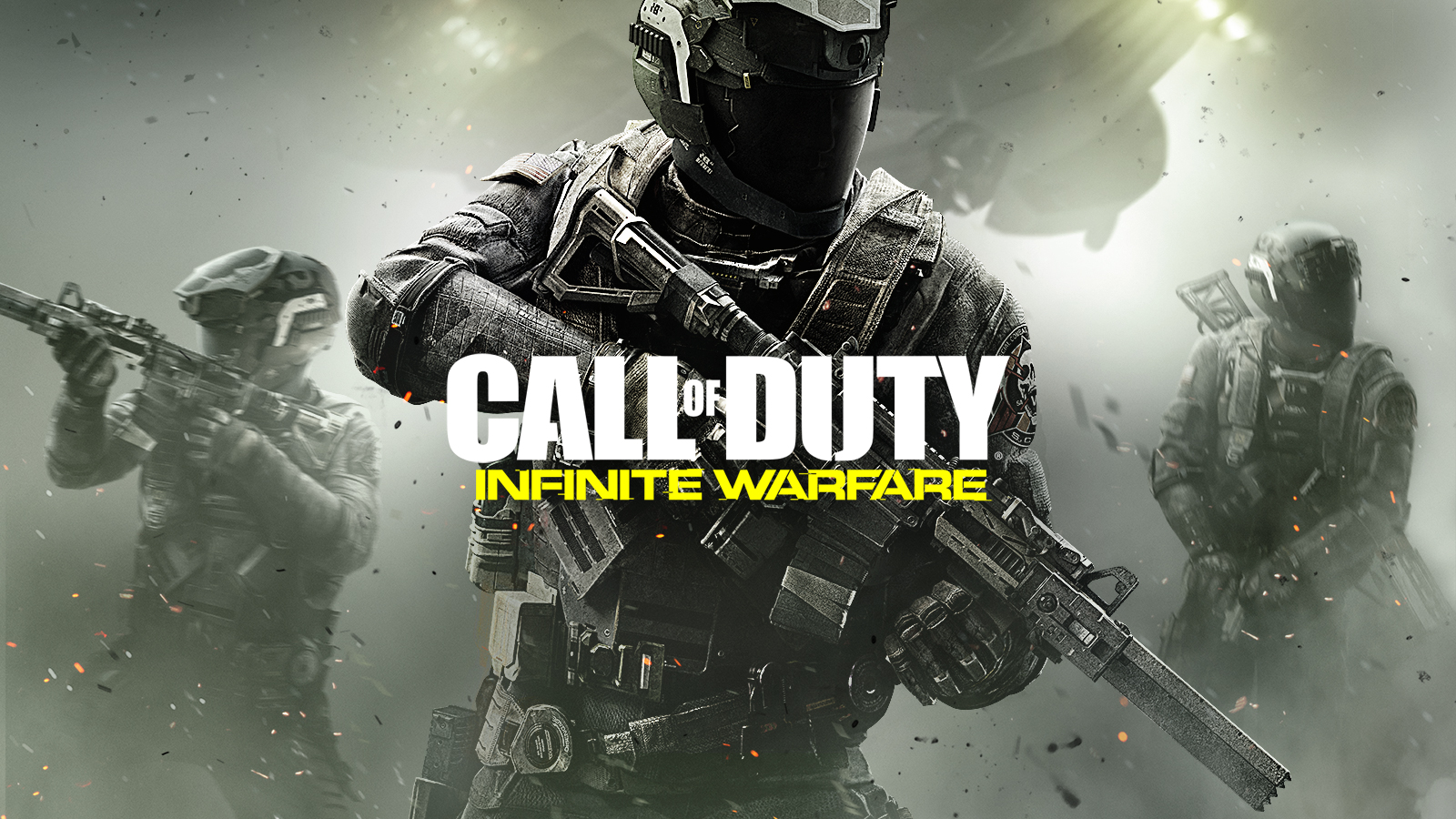
Before I start, it should be known that outside of a very brief hands-on session with BLACK OPS III last year, I haven’t touched the Call of Duty series since the original BLACK OPS back in 2010. I missed the jump to science fiction that happened around the time the second Black Ops released, and the robust Zombies mode is practically unrecognizable from the half-joke, post-credits Easter egg that I remember from WORLD AT WAR. My abandonment of Activision’s flagship franchise was brought on by many factors, but mostly by what I saw as an avalanche of carbon copy clones year after year. I know lots of people who continued to play the games, even entering warzone tournaments free entry to prove their skills to other players but I just needed a break from the franchise. So believe me when I say there was no greater skeptic going into CALL OF DUTY: INFINITE WARFARE than yours truly.
INFINITE WARFARE might be the biggest surprise in 2016 gaming. It defies all expectations set by fans and critics alike, to the point where it hardly suits the Call of Duty label. That’s not to say the game lacks anything that you’d expect from COD, for better or worse, but rather that it takes the kind of risks you would never expect from a series so deeply entrenched in our consciousness.
To elaborate, I’ll commit a kind of faux pas: I’m not going to talk about the competitive multiplayer for which the series has become known for in this review. My reasons for this are twofold. For one, my thoughts on INFINITE WARFARE’s multiplayer fall in line with Jason’s impressions from the game’s open beta. Unbalanced weapons, bland maps, and pay-to-win microtransactions are all great reasons to stay far, far away from it. But more importantly, I want to highlight the fact that with INFINITE WARFARE, Infinity Ward were at once able to return the series to its singleplayer roots, while also reinventing its identity.
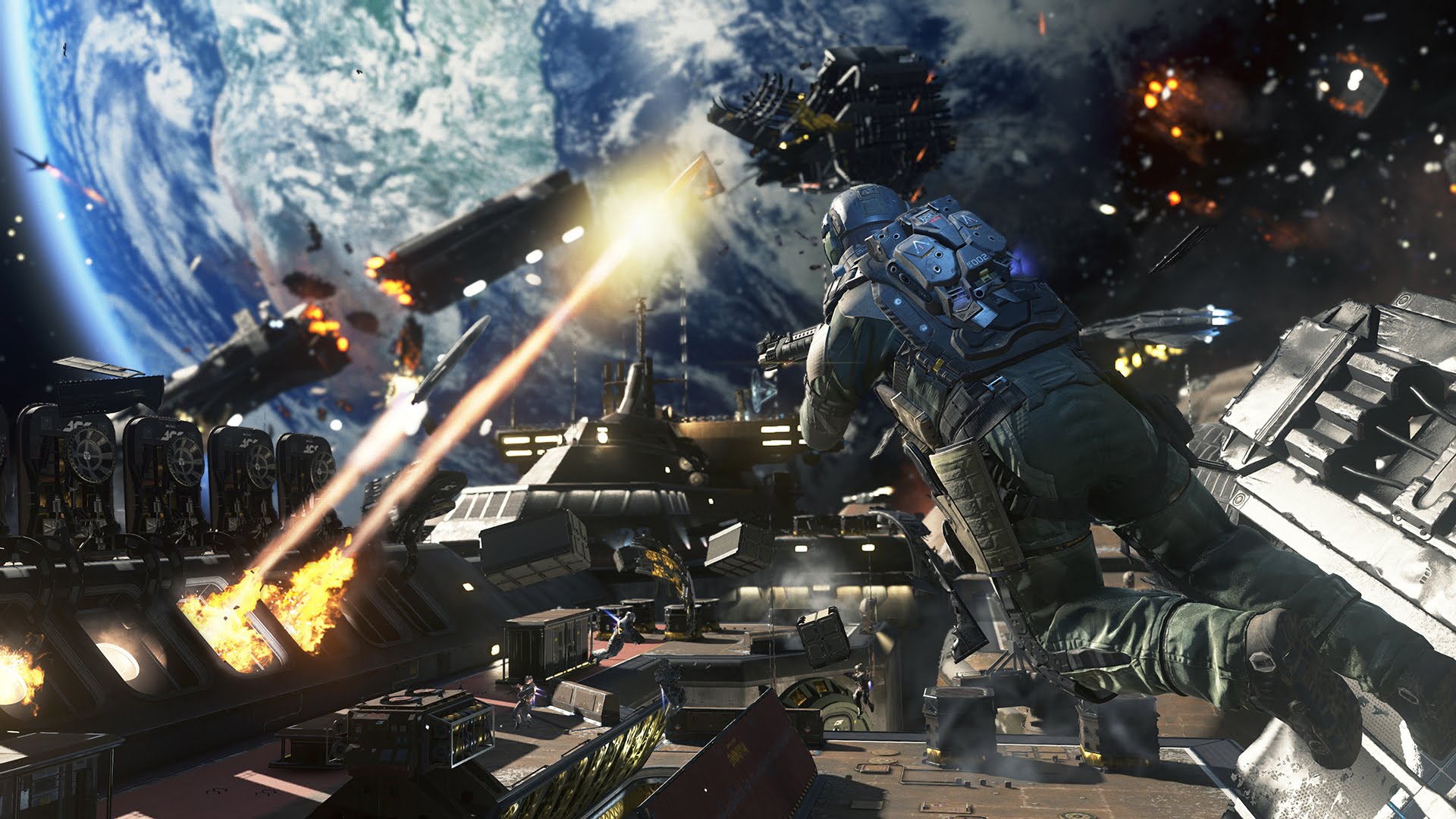
Boldly going where no Call of Duty has gone before
INFINITE WARFARE’s universe, like other non-Treyarch titles GHOSTS and ADVANCED WARFARE before it, exists within its own vacuum. In the far future, mankind has colonized the entire solar system, mining its planets in order to maintain Earth’s dying ecosystem. When the Mars-based Settlement Defense Front decides to stop paying the piper, they launch a crippling attack on Earth and seize its colonies. As Captain Reyes, the clean-cut, barrel-chested commando who has been given command of a space carrier very conveniently christened “Retribution.” it’s left to you to save the world(s) from the sinister Martians.
While the above premise could have easily been used to justify a cookie-cutter corridor shooter (but in space), it admirably chooses instead to innovate in several crucial ways. The most noticeable is the structure in which the campaign is presented. Rather than being dragged through a linear series of levels, each mission Reyes and company undertake is decided from the Retribution’s command center. From the bridge, the player can choose to undertake ground assaults, boarding actions, and naval engagements all across the solar system, in whatever order they choose.
Though the narrative forces you to take part in some operations, most are completely optional, though they reward you with gear and upgrades you wouldn’t receive from trekking through the main game. After each mission, you return to the Retribution, which acts as a hub world with light character interaction and exploration elements. While nowhere close to the scale of MASS EFFECT’s Normandy, it’s fun nonetheless to watch newscasts of your latest raid, or track the status of enemy leaders from your office desktop.
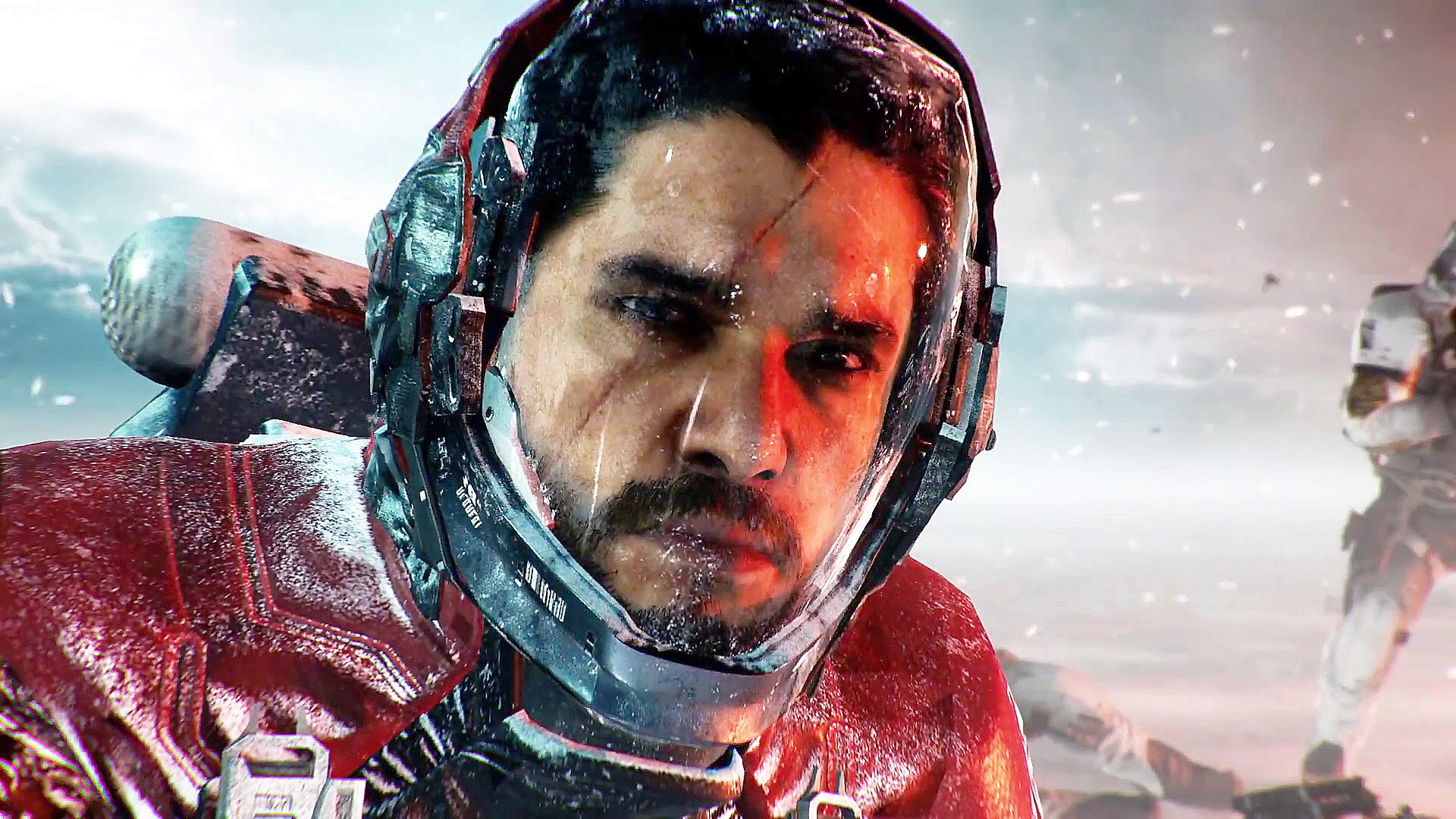
Jon Snow’s hunt for White Walkers takes him to some weird places
In addition to being a jacked AMERICAN SNIPER reject, Captain Reyes is also a pilot, meaning that nearly half of INFINITE WARFARE’s 12-ish hour campaign is spent in the cockpit of a starfighter. Though trailers promised aerial combat, there was no telling how much of the gameplay was on-rails or not. To my great surprise and delight, these sections are fully functioning arcade flight sims, handling somewhere between STRIKE VECTOR and ACE COMBAT: ASSAULT HORIZON. These engagements stand out as the most thrilling in the game, and it’s a sad state of affairs for the flight sim genre when it’s best entry of the year is a Call of Duty title.
Outside of your ship, firefights play out much like last year’s BLACK OPS III. Jetpacks and parkour give your character plenty of mobility, while your futuristic arsenal provides enough firepower to destroy entire planets. The arsenal is divided between ballistic and energy projectile weapons, which offer bonuses against human and robotic foes, respectively. Environmental hazards like burning solar flares and rapid depressurization from breached bulkheads offer additional tactical considerations. Most impressive is the zero-G combat, where the player can adjust their alignment on the fly and attack the enemy from any angle.
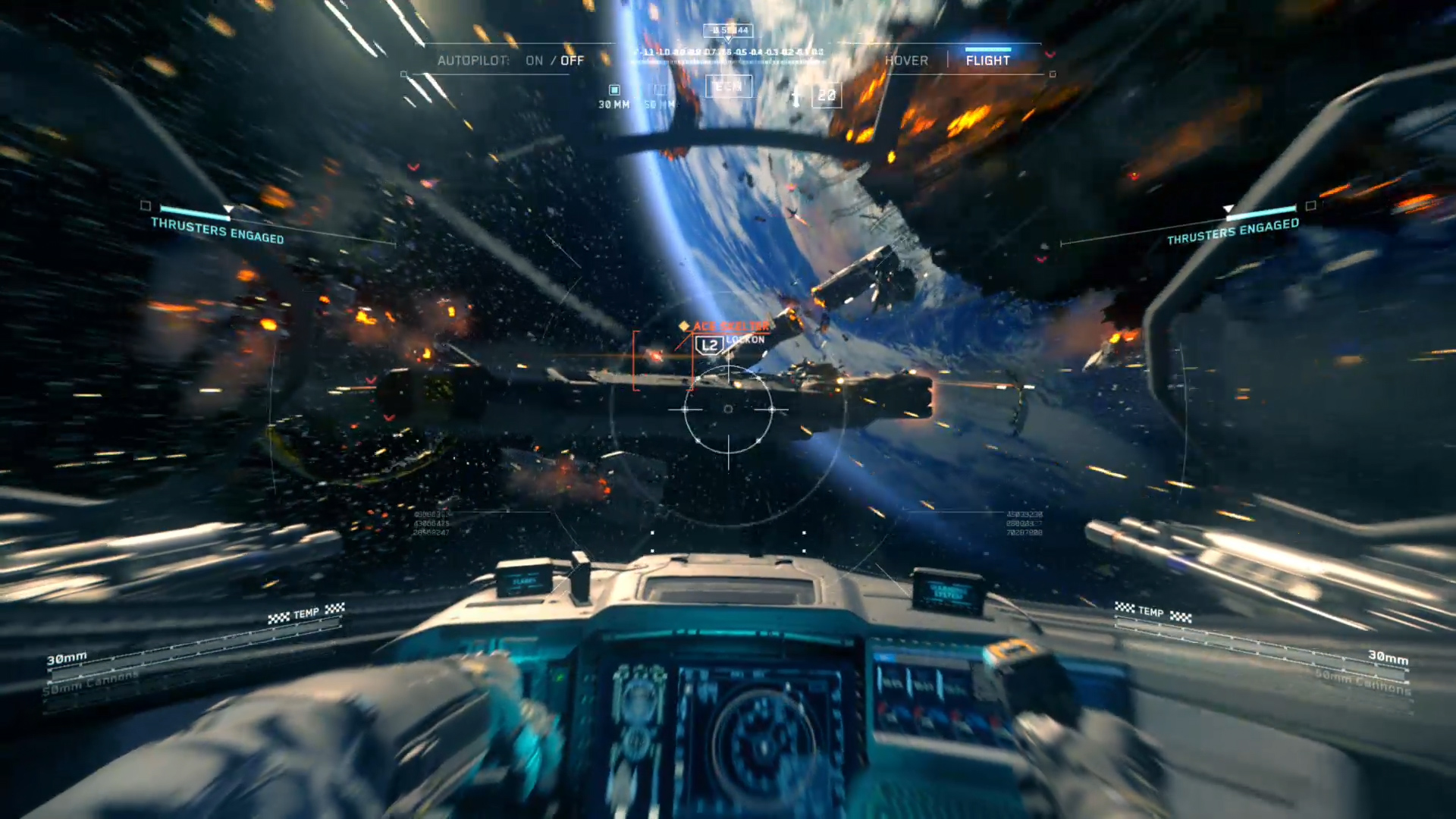
Shown here: Your typical FPS
What does stand out here is the new “Specialist” mode which is, for some baffling reason, locked until the player completes the campaign for the first time. In this difficulty setting, health doesn’t regenerate unless the player uses an incredibly scarce amount of medkits. Additionally, much like in FALLOUT 4, the player will suffer status effects depending on which part of their body gets shot. Crippled legs will force the player to limp, and broken arms can stop them from using certain items or even from firing their weapon. Guns can be shot out of your hands, and even worse, your helmet can be broken. Without a helmet (of which you’ll be lucky to even find two replacements for in a mission), you are vulnerable to instant death headshots, but you will also suffocate in any environment that lacks an atmosphere (which is most of the ones you visit). Specialist mode breathes new life into not only the series, but the genre itself. The blend of fast-paced action gameplay with a hardcore, simulation-level damage, difficulty, and inventory system is simply exhilarating.
If there are any flaws with INFINITE WARFARE’s campaign, they lie within the story. That’s not to say that all the writing is bad, as the dialogue is, in fact, disarmingly strong. The plot itself, however, is never allowed to fulfill its potential. The relatively limited scope of the conflict and a cliffhanger ending are the telltale signs of caution from management affecting the quality of an end product, as this feels more like a water tester for future installments than a stand alone experience. Content qualms aside, there are a few eyebrow-raising concerns brought up in the narrative. The story is driven by a questionable moral revolving around the necessity of spending the lives of one’s troops like currency to achieve an objective, serving as callous, chest-thumping antithesis to classics like SPEC-OPS: THE LINE or METAL GEAR SOLID V. It’s nothing new for the franchise, but disappointing nonetheless. Additionally, I don’t know whether I’m more disappointed or impressed that despite being freed from the restrictions of a real world setting, and all the cliched villains that come with it, INFINITE WARFARE still features an entirely Anglo-American cast of heroes facing off against diabolical space-Slavs and space-Arabs.
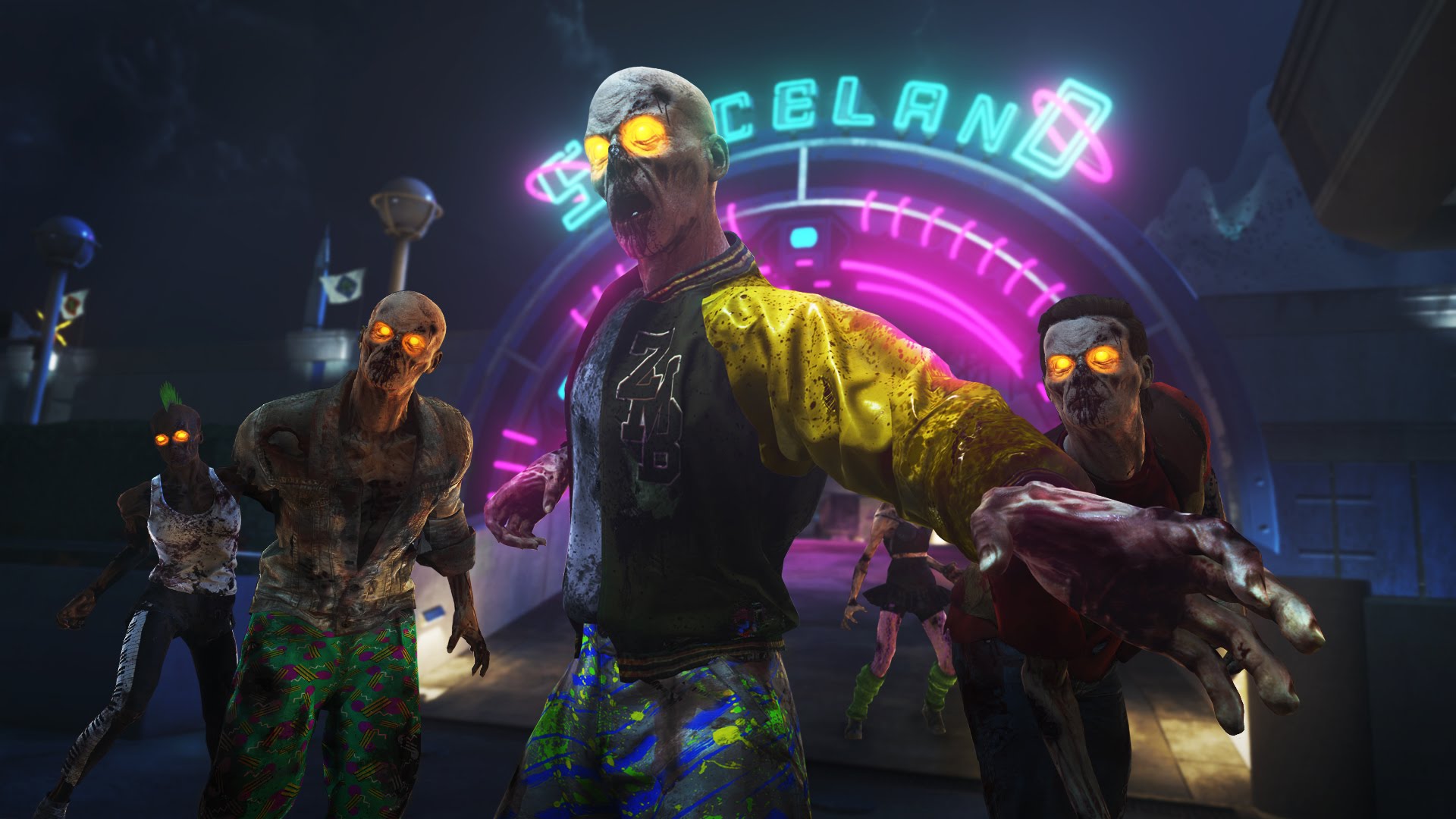
Speaking of poorly represented demographics…
The hallmark Zombies mode, which has overtaken even Gears of War’s classic Horde mode as the premier cooperative shooter experience on the market, is back, and like the mode in BLACK OPS III, is completely divorced from INFINITE WARFARE’s sci-fi slant. This time around, it’s a sickening 80’s nostalgia trip to hell, an oeuvre which can only be a gift from God or a deal-breaker at this point. “Zombies in Spaceland” is a disorienting blur of neon colors, Blondie tracks, and zany cameos by Paul Reubens and David Hasselhoff, but look past the garish presentation and you’ll find a shockingly deep puzzlebox to play around in. Tons of secrets, unlockables, and treasure hunts give the stage plenty of replay value, and as always, splitscreen sweetens the pot greatly.
Yes, INFINITE WARFARE’s multiplayer is a completely negligible component of the package. Series faithful will likely tolerate it regardless, but others looking for an engaging online experience will find plenty of better options on the market. While the Zombies mode is as strong as ever, it’s the resurgence of the singleplayer campaign that ties the whole package together. Though it sometimes feels more like a great proof of concept rather than an excellent game, the campaign is worth experiencing at least once through a rental, if only for the superb Specialist mode that comes afterwards. This is definitely one to keep an eye on.
Verdict: Recommend
Reviewed on PlayStation 4, also available on Xbox One and PC

